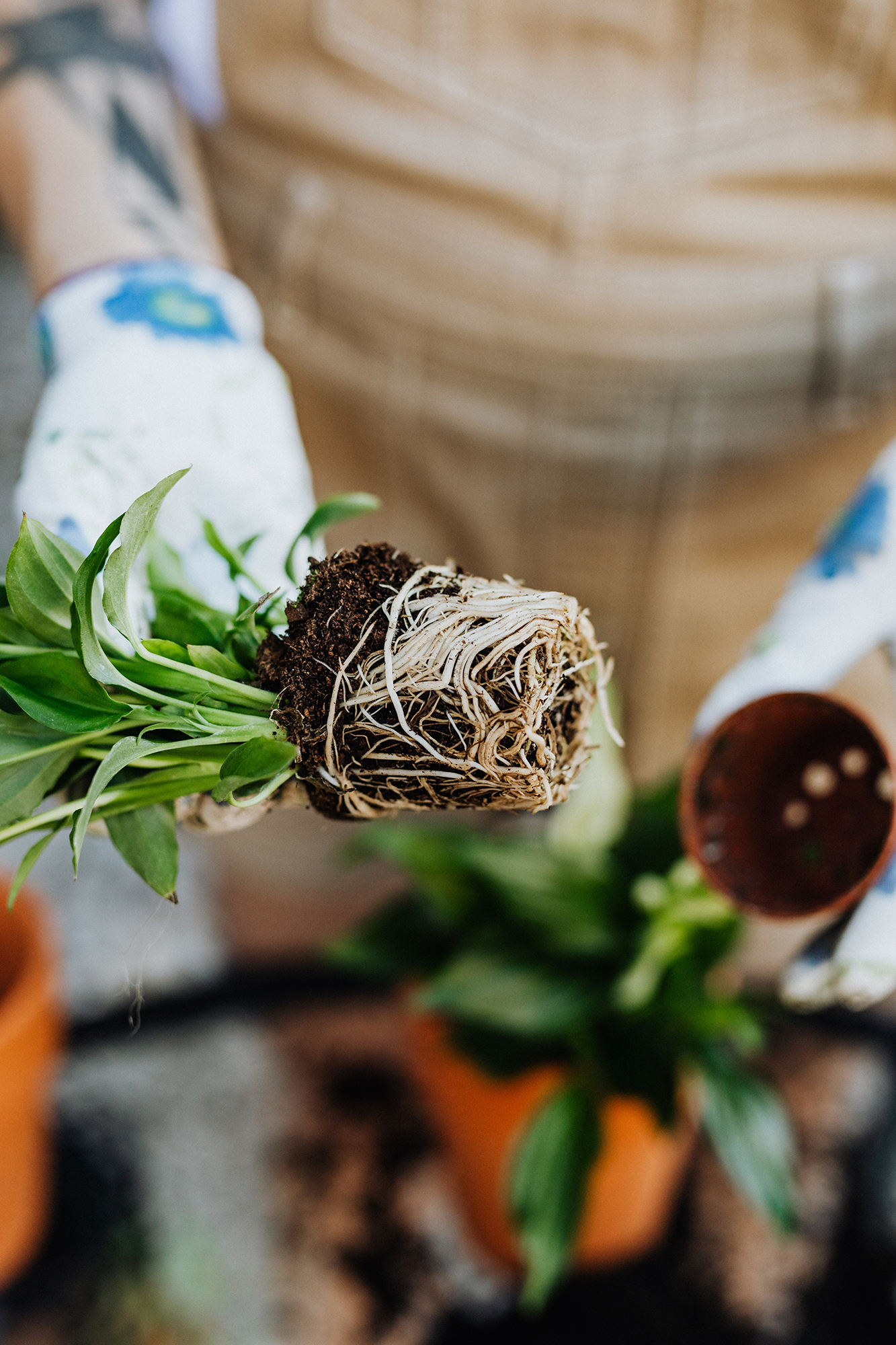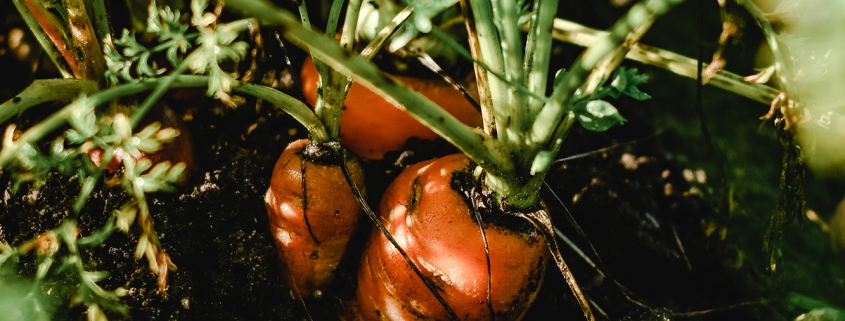Getting to the Root of your Plantings
Because roots are the unseen parts of our plantings, they’re often overlooked by gardeners. But roots play a critical role in the life and well-being of your landscaping.
- They anchor the plant so its stem, leaves, and flowers are properly supported.
- They absorb water and nutrients from the ground and send them upward.
- They store carbohydrates and other nutrients that will be needed as a source of energy in spring for shrubs, trees, perennials, and biennials to begin a new season of growth.
Types of Roots
Root systems can be sorted into two types: Tap-root systems and Fibrous-root systems
 Tap-root systems have one main root with smaller roots branching off. They are deep roots and usually associated with young woody plants, nonwoody perennials, and root vegetables such as carrots and beets. Once these roots are established, they need more water, but less frequency. Plants with tap roots are also more difficult to transplant as the main tap root runs deep into the soil. For propagating, try using a cutting or the plants seeds instead of dividing.
Tap-root systems have one main root with smaller roots branching off. They are deep roots and usually associated with young woody plants, nonwoody perennials, and root vegetables such as carrots and beets. Once these roots are established, they need more water, but less frequency. Plants with tap roots are also more difficult to transplant as the main tap root runs deep into the soil. For propagating, try using a cutting or the plants seeds instead of dividing.
Fibrous root systems of grasses, annuals, and some perennials look like a dense mat that reside in the first few inches of soil. Once established, these types of plants require less water but more frequent watering. Plants with fibrous roots can be divided as they are easily dug up with a small section of its roots, leaving the rest of the roots intact.
Tips for Keeping Your Roots Happy
- Using mulch helps to regulate the temperature of your soil, keeping roots cooler in summer and warmer in winter. Mulch also conserves moisture, helping more of your watering get to roots instead of evaporating.
- Breaking up your soil when planting makes it easier for roots to penetrate and grow, speeding establishment. This is why when planting a tree the hole should be dug two to three times as wide as the root ball.
- Roots need oxygen for their health. Oxygen is acquired from air pockets in the soil. Having a well-drained area around your plantings allows air to remain in these pockets. Soil that’s too wet compresses the soil, eliminating these air pockets.
- Plants need extra care and attention when they are first establishing their root systems. Flowers and vegetables take about two to four weeks to establish. Shrubs take about one year, and trees can take about two years.
Remember the saying, If Momma is happy, everyone is happy? Well the same goes for roots, If the roots are happy, the plant will be happy.




